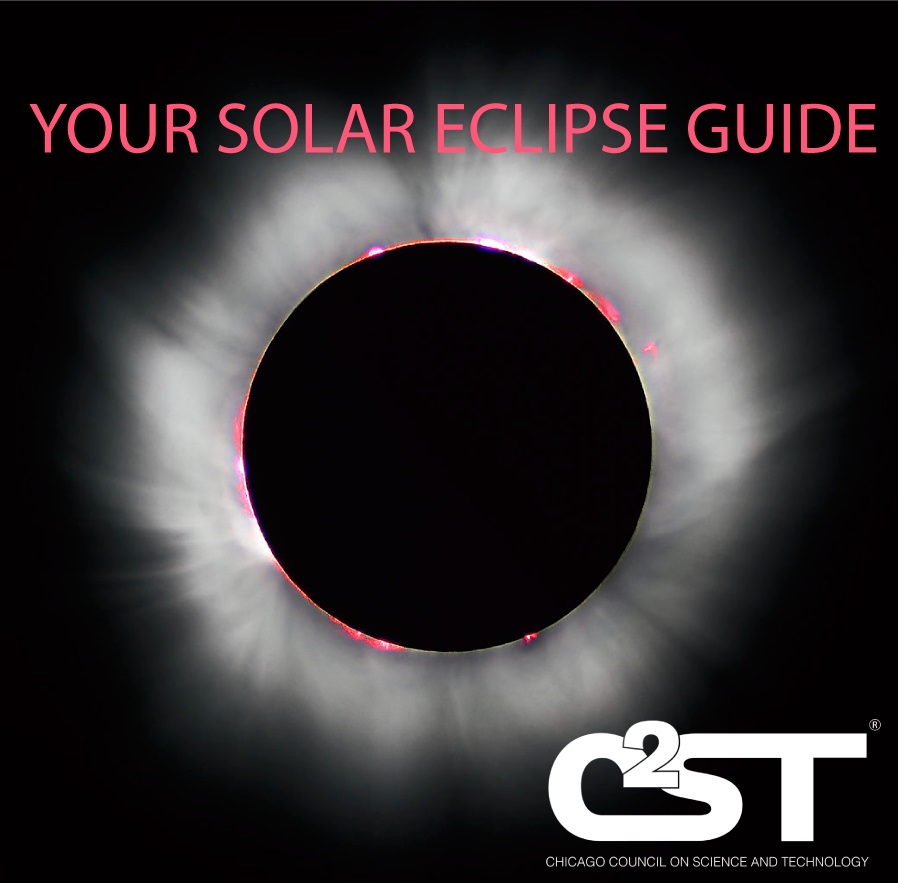All of North America will enjoy a total eclipse of the sun on August 21, 2017. Those in the path of totality, where the moon completely covers the face of the sun and only the corona is visible, will experience a total solar eclipse–temperatures will suddenly drop, and wildlife will go eerily silent. This path of totality will stretch from Salem, Oregon to Charleston, South Carolina. The last time the Lower 48 experienced a total solar eclipse was 1979; the next one traveling coast to coast won’t be until 2045.
Here in Illinois, the path of totality will cross the southernmost part of the state, and last a relatively long 2 1/2 minutes or so. We’ve complied some resources to help you enjoy this once-in-a-lifetime, in-your-backyard event. And remember–enjoying the eclipse safely is of paramount importance! While stunning, we don’t want anyone to sustain lasting damage from viewing the eclipse.
A history of solar eclipses, or what one Chinese record described as “the sun being eaten,” from NASA. While today we eagerly await the opportunity to view an eclipse, in ancient times eclipses were viewed with fear.
Everything you need to know about the August 21 eclipse from an astronomer, courtesy of Newsweek.
Is this your best chance to see an eclipse? The Washington Post takes you through every solar eclipse happening in your lifetime.
Safety first! How to safely view the total solar eclipse, courtesy of Scientific American.
The path of totality across Illinois, courtesy of GreatAmericanEclipse.com
View NASA’s comprehensive guide to the total solar eclipse across the U.S.
Want to participate in a nationwide science experiment? NASA’s GLOBE Observer is a free, easy-to-use app that guides students and citizens scientists through data colelction for the eclipse.
Visit the Adler Planetarium’s exhibit, Chasing Eclipses, to learn all about this eclipse, the history of eclipses, and to see some rare tools used to view eclipses from as early as the 1600s.
What are scientists hoping to learn from the 2017 eclipse? Watch this informative video from ASTRA, the Alliance for Science & Technology Research in America.
Can the eclipse tell us if Einstein was right about general relativity? He probably was, but astronomers will put his 1915 theory to the test with DIY experiments. Read more in ScienceNews.
The show geared at preschoolers, Space Racers, has an information page for children all about the eclipse, including age-appropriate activities.
We hope you have a safe and fun viewing experience of the total solar eclipse! Be sure to share your experiences with us on Twitter, Facebook or at info@c2st.org. We look forward to hearing from you!











